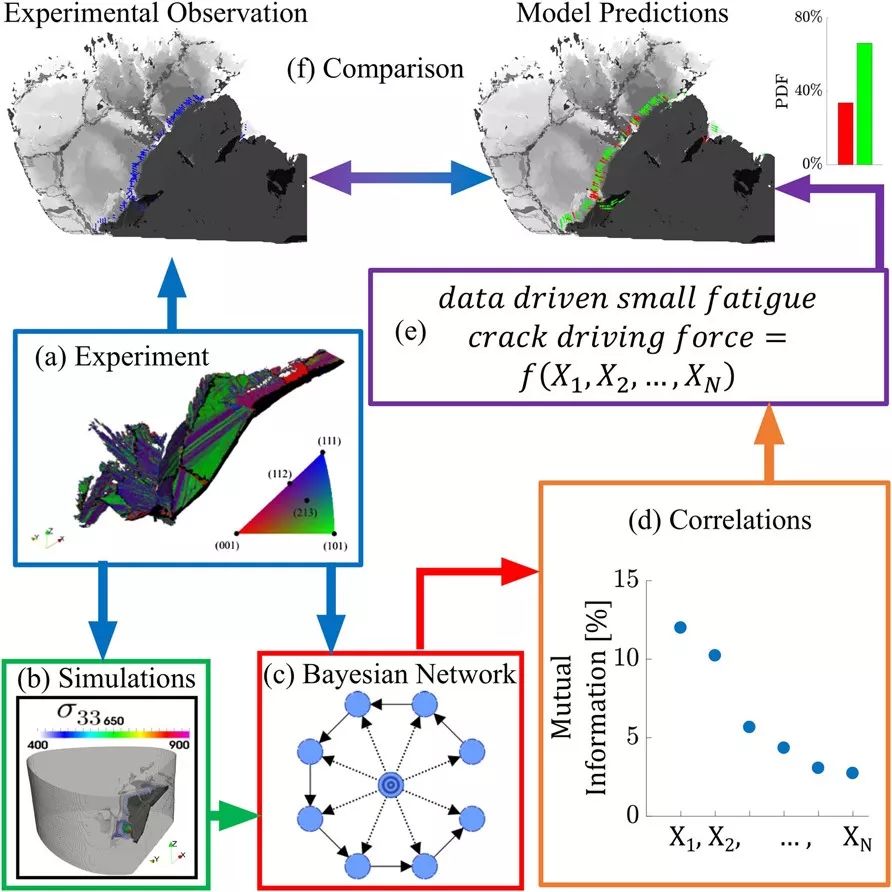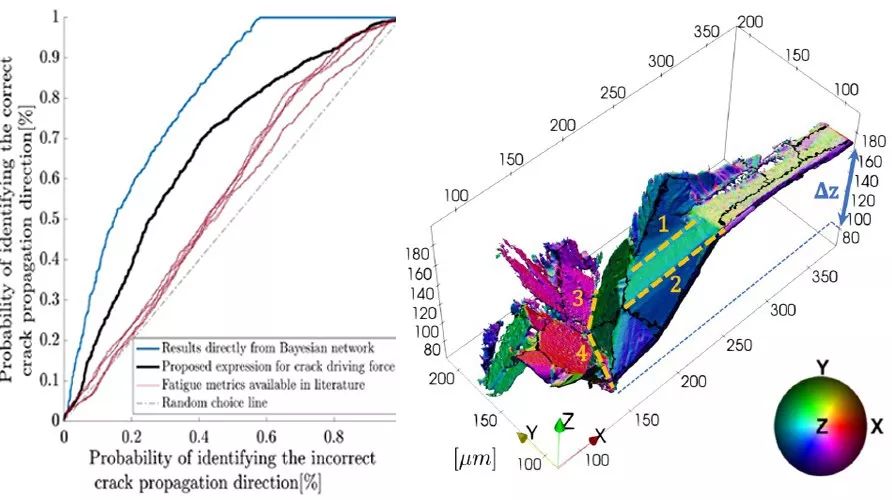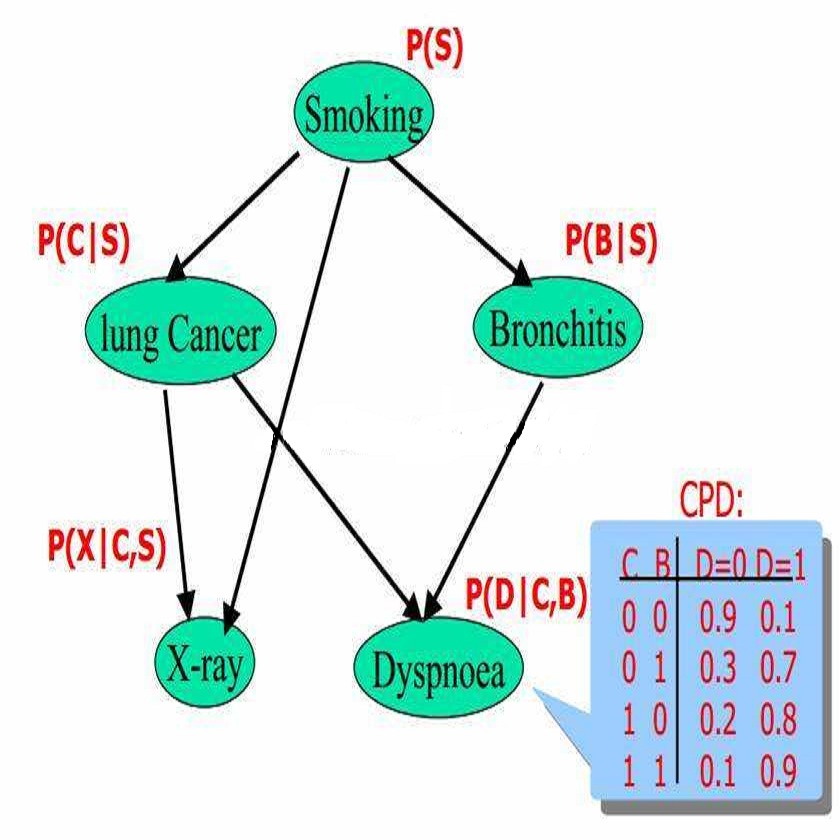npj: 机器学习-数据驱动:裂缝扩展的微机械变量识别
海归学者发起的公益学术平台
分享信息,整合资源
交流学术,偶尔风月
小裂纹的扩展是导致结构部件进入疲劳期的主要因素。尽管人们对此有很大的兴趣,但就裂缝扩展的方向和速度而言,小裂缝的生长指标尚未确定。
由美国普渡大学Michael Sangid领导的团队,提出了一种识别微结构小疲劳裂纹驱动力的新方法。他们采用机器学习建立了两个独立的贝叶斯网络,分析了钛合金原位疲劳循环过程中获得的衍射数据和X线断层影像数据。该方法能识别影响疲劳裂纹扩展方向和扩展速率的微机械和微结构变量。他们发现,第一主应力轴在特定方向上的取向和最大分辨剪切应力与裂纹扩展最为相关,将其纳入关系分析中可以描述裂纹扩展方向的概率。他们的分析模型可靠地预测了小裂纹扩展的方向,再现了实验结果,比之前文献的预测更为可靠。这种半监督机器学习方法不仅可以识别钛合金中小裂纹扩展方向背后的复杂变量,也有望识别其他复杂工程问题中的驱动力。
该文近期发表于npj Computational Materials 4:35 (2018),英文标题与摘要如下,点击左下角“阅读原文”可以自由获取论文PDF。
Using machine learning and a data-driven approach to identify the small fatigue crack driving force in polycrystalline materials
Andrea Rovinelli, Michael D. Sangid, Henry Proudhon & Wolfgang Ludwig
The propagation of small cracks contributes to the majority of the fatigue lifetime for structural components. Despite significant interest, criteria for the growth of small cracks, in terms of the direction and speed of crack advancement, have not yet been determined. In this work, a new approach to identify the microstructurally small fatigue crack driving force is presented. Bayesian network and machine learning techniques are utilized to identify relevant micromechanical and microstructural variables that influence the direction and rate of the fatigue crack propagation. A multimodal dataset, combining results from a high-resolution 4D experiment of a small crack propagating in situ within a polycrystalline aggregate and crystal plasticity simulations, is used to provide training data. The relevant variables form the basis for analytical expressions thus representing the small crack driving force in terms of a direction and a rate equation. The ability of the proposed expressions to capture the observed experimental behavior is quantified and compared to the results directly from the Bayesian network and from fatigue metrics that are common in the literature. Results indicate that the direction of small crack propagation can be reliably predicted using the proposed analytical model and compares more favorably than other fatigue metrics.
扩展阅读
本文系网易新闻·网易号“各有态度”特色内容
媒体转载联系授权请看下方








